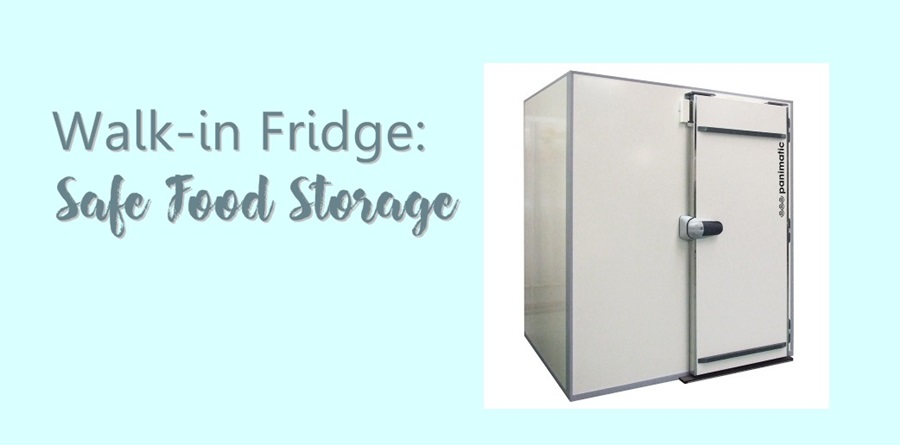
The wonders of the walk-in fridge!
Have you ever wondered how restaurants, bakeries, pastry manufacturers and other kinds of businesses cope with storing large amounts of food in a way that respects all the relevant environmental health requirements? Well, the walk-in fridge, (or cold room) together with its big brother, the walk-in freezer, pretty much hold the key to how they keep their stocks of food products and ingredients at the right temperature. As their names suggest, these items of kitchen equipment are large enough to actually stand upright in. They can come in a variety of sizes, but all will adhere to fairly strict guidelines when it comes to temperature. Generally-speaking, walk-in fridges will maintain temperatures of between -2°C and 12°C. There are often two different temperature zones in play: a chiller, with temperatures of between 2°C and 12°C, and a colder zone, (-2°C to 5°C). Walk-in freezers, on the other hand, typically keep food at a constant -18°C to -22°C. At these temperatures, food can be stored safely for years.
How to store food safely
Fridges and freezers, of the walk-in type or any other, need to be used correctly to ensure they do their job properly. With this in mind, one of the most important things you can do is to keep a careful eye on your appliance’s temperature. Domestic fridges and freezers don’t always have their own digital displays – in this case, invest in a thermometer and check it at least once a week. Keep fridges clean by wiping up spills – this will help keep bacteria at bay. It is also extremely important that food that needs freezing or refrigerating is safely stored away as quickly as possible. Nothing destined for cold storage should be left at room temperature for more than 2 hours. In warmer weather, this time limit is reduced further. Finally, neither fill your freezer too full – this prevents proper air circulation – or leave it mostly empty either, as it will have to work harder to maintain the proper temperature in a nearly empty space.

Add a Comment